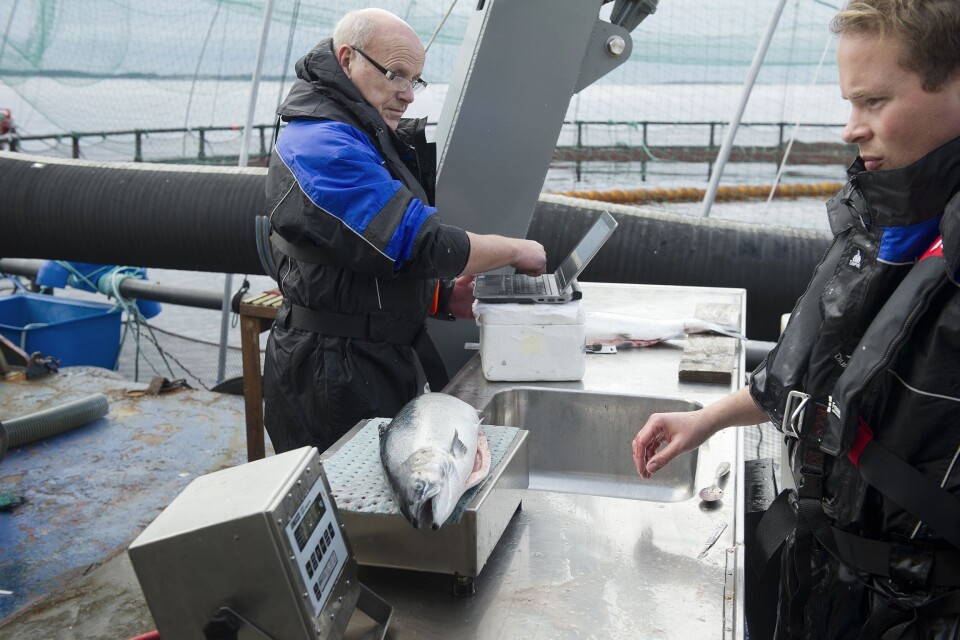
Striking benefits of low fat feeds
Low fat, high protein feeds can reduce mortality by over 50% in salmon infected with PD and HSMI, according to new research by Nofima.
Pancreas disease (PD), heart and skeletal muscle inflammation (HSMI) are two of the most widespread and common diseases in Norwegian farmed salmon, and they often occur simultaneously. PD alone costs the Norwegian aquaculture industry over a billion Norwegian kroner a year, according to estimates from the Institute of Marine Research.
Nofima has research licences at different sites, two of which are co-located at the commercial producer Blom Fiskeoppdrett outside Bergen, where fish were found to be infected with PD and HSMB simultaneously in the early summer, when they were in the 1.3-1.9 kg range.
Scientist Jens-Erik Dessen and Kjell-Arne Rørvik, from Nofima, discovered that those salmon which had been fed lean, protein-rich trial diets had 4% mortality, while those given a normal fat feed, had 9% mortality.
The lean, protein-rich feed gave both higher feed intake and growth while it gave lower acute mortality as a direct result of the outbreak. Statistics also show that larger fish suffered lower mortality and that fish fed the low fat diet were less stressed during handling. Stress, fish size and diet explains 99% of the variation in acute mortality, Nofima reports.
Exactly why this is the case cannot yet be explained by the researchers, but the results could well be useful nonetheless.
“PD and HSMI tend to break out in spring and autumn. Before, during and after the onset, it may be advantageous to use diets with relatively high protein content relative to fat, to maintain good growth and minimize mortality,” says Dessen.























































